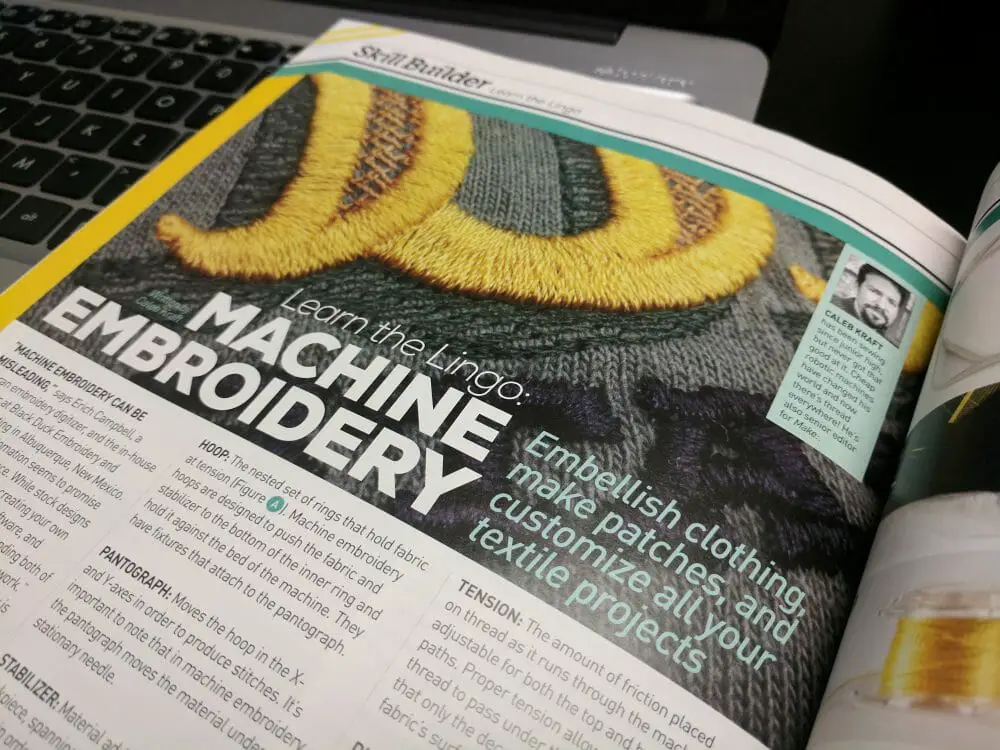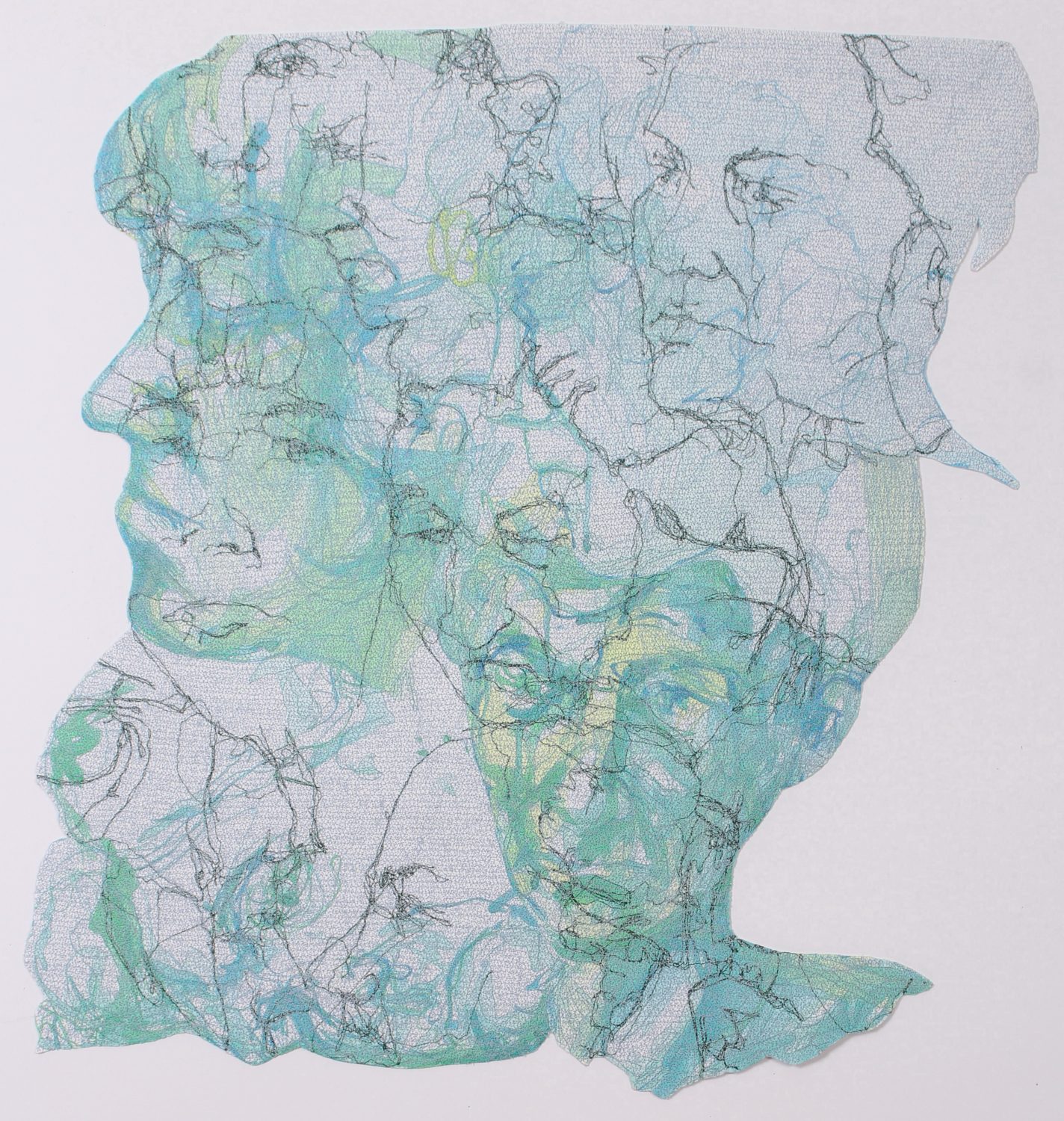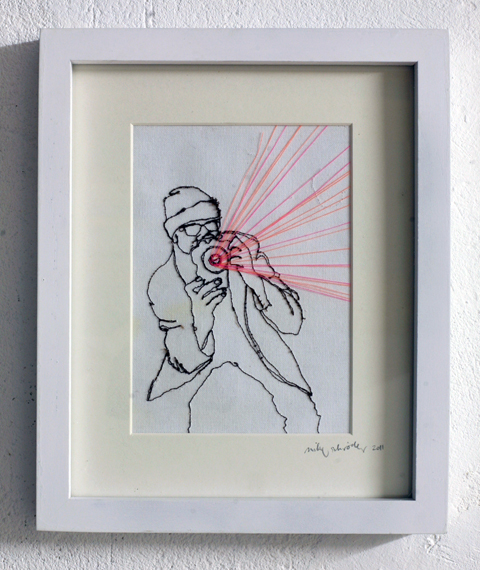
Machine embroidery is technical by its nature: It’s full of arcane terms, from the materials used, to machine parts, to the host of expressions wallowing in the deep recesses of digitizing tools and technique. To the end of demystifying digitizing and giving you a greater grasp on machine embroidery, I’ve always intended to post a simple glossary of terms that stump new embroiderers. As I began drafting up my latest incarnation of this list, I had a familiar feeling; I’d already written it! Rather than reinvent the wheel on this elemental collection of terms, let me present to you the definitions that I wrote for the one and only Make: Magazine: when they asked me to consult for their blog and 2017 August/September issue. Without further ado, here’s the link: Learn the Lingo: Machine Embroidery

In the article featured on the Make: Magazine blog, I define simply (at least as simply as my geeky mind will let me) terms ranging from digitizing to tension with detours through pantograph and push and pull compensation. If you have a burning desire to walk up to a commercial embroiderer or the tech at your sewing shop and give them the impression that you are an old-timer like myself, this will have you jamming out the jargon with the best of them.

With the addition of some illustrative images, Make: Magazine’s experimenter extraordinaire, the fortuitously names Caleb Kraft, took my bare-bones glossary (pun very much intended) and turned it into a tool I feel that all of you can use. If you want to get in on the “fun” of sounding like a salty old embroiderer or you simply would love have someone verify that a column and satin stitch may indeed be the same thing under differing aliases, I heartily suggest that you click through on this link and check out the full text. Besides, the good people at Make: allowed me to do one of my favorite things; wax poetic about what machine embroidery is and isn’t, why it’s more difficult than people expect, and what kind of crazy you need to be to want to dedicate yourself to doing it with regularity. To illustrate, yet again, my feelings on the subject, I’ll leave you with my opening quote:
Machine embroidery can sometimes be misleading to erstwhile practitioners, because the level of automation seems to promise a hands-off experience, [while] using well-made stock designs can be relatively simple, creating your own designs actually takes not only specialized software, but requires a great deal of understanding both of the media used and of the way the machines work. Well-executed embroidery is never a scan-and-convert process; creating designs requires art to be reinterpreted for the medium, using skills that combine what starts as vector drawing with the added difficulty of understanding how fabric distorts when stitched and what can and can’t be done with a needle and using that artistically to render the design in thread on a flexible surface. Mix art, math, craft, and a healthy dose of visualizing things that you can’t see until the needle hits the fabric; if that blend sounds more exciting than frustrating, machine embroidery may be for you.
If you don’t feel like an awesome artist/scientist/poet/warrior of the electric needlecrafts for choosing machine embroidery after reading that, you should- at least that’s what I intended, Go check out the article online or grab a physical copy to catch all the rest of the obsessed creators and tinkerers like yourself in the act of making something cool. There’s nothing quite as good as knowing just how to say what you mean and being in on the ‘secret handshake’ terms that let people know you are a stitcher supreme. 😉
Erich is an evangelist for the craft, a stitch-obsessed embroidery believer, and firmly holds to constant, lifelong learning and the free exchange of technique and experience through conversations with his fellow embroiderers. A small collection of his original stock designs can be found at The Only Stitch



